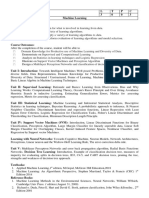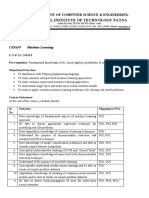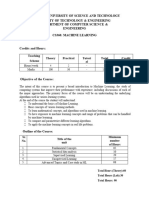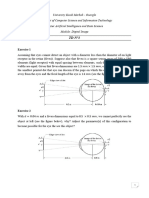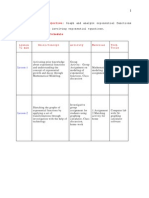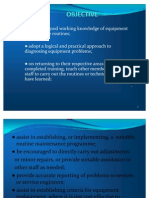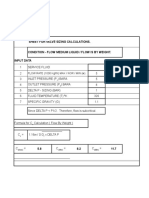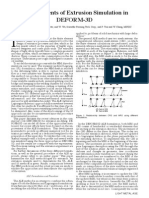0% found this document useful (0 votes)
60 views5 pagesMachine Learning Lesson Plan
The document outlines the course CS 3035 (Machine Learning) offered at Kalinga Institute of Industrial Technology, detailing its objectives, outcomes, lesson plan, and assessment criteria. The course aims to provide a comprehensive understanding of machine learning techniques, neural networks, and practical programming skills. It includes various modules covering topics such as regression, classification, clustering, and neural networks, along with associated textbooks and reference materials.
Uploaded by
mohiddin.shaik9999Copyright
© © All Rights Reserved
We take content rights seriously. If you suspect this is your content, claim it here.
Available Formats
Download as PDF, TXT or read online on Scribd
0% found this document useful (0 votes)
60 views5 pagesMachine Learning Lesson Plan
The document outlines the course CS 3035 (Machine Learning) offered at Kalinga Institute of Industrial Technology, detailing its objectives, outcomes, lesson plan, and assessment criteria. The course aims to provide a comprehensive understanding of machine learning techniques, neural networks, and practical programming skills. It includes various modules covering topics such as regression, classification, clustering, and neural networks, along with associated textbooks and reference materials.
Uploaded by
mohiddin.shaik9999Copyright
© © All Rights Reserved
We take content rights seriously. If you suspect this is your content, claim it here.
Available Formats
Download as PDF, TXT or read online on Scribd
/ 5





















